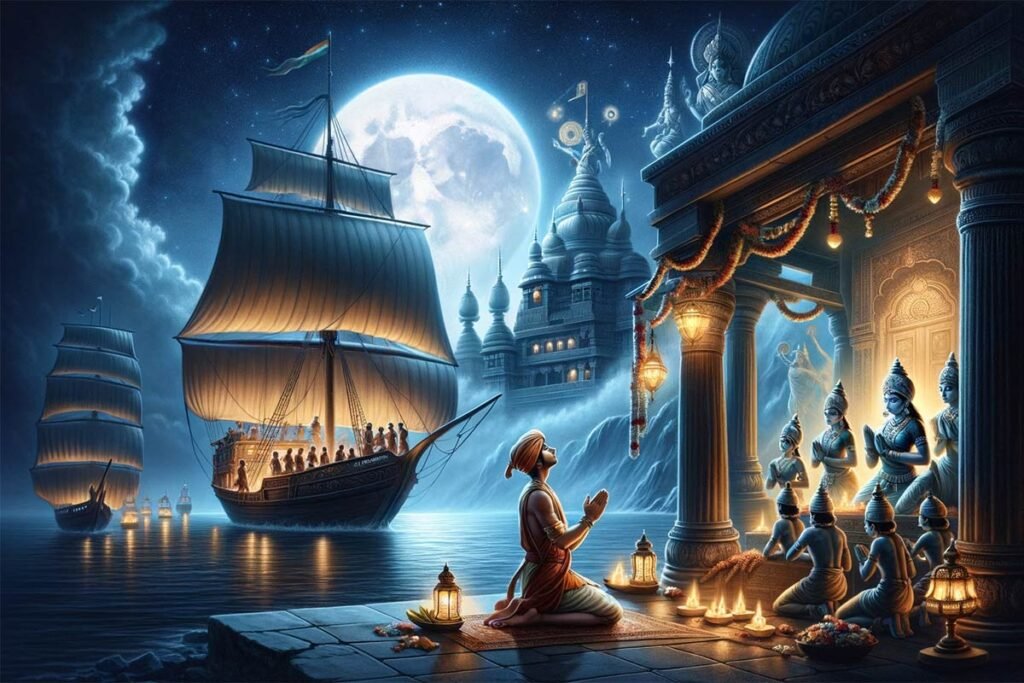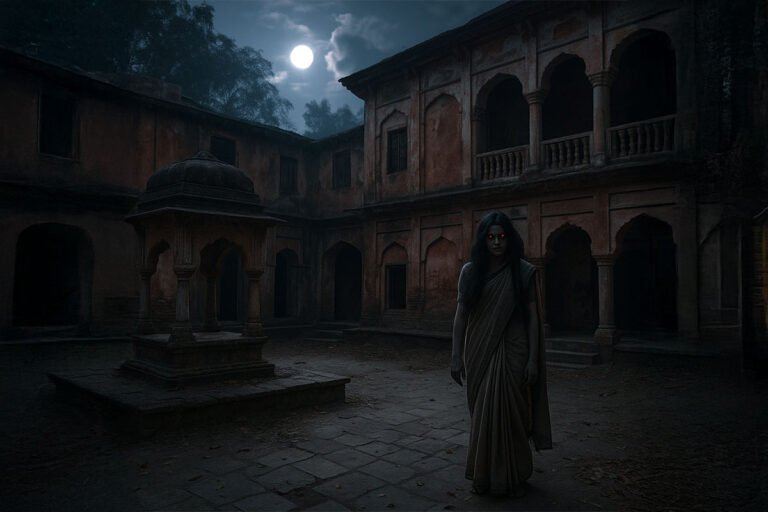Long ago, in the land of Kalinga, now known as Odisha, there lived a community of brave and skilled sailors known as Sadhabas. These sailors were renowned for their daring sea voyages to distant lands, bringing back wealth and exotic goods that amazed their people.
In a small coastal village named Cuttack, there lived a young Sadhaba named Balarama. Balarama was preparing for his maiden voyage to the far-off islands of Bali. The night before his departure, the village gathered to bid farewell to Balarama and his crew. Amidst the bustling preparations, an air of solemnity filled the air as the sailors prepared to seek blessings from the revered goddesses, Varahi and Mangala.
Varahi, the boar-headed goddess, was believed to be the protector of the sailors in the vast sea. Mangala, on the other hand, was worshipped as the deity who ensured their safe return. The villagers believed that without the blessings of these goddesses, no voyage could be successful or safe.
As the moon rose high, Balarama and his crew, dressed in vibrant attires, proceeded to the ancient temple by the sea. The temple, lit by countless lamps, looked ethereal against the dark, vast ocean. The head priest, a wise old man with a long white beard, led the prayers. The air was filled with the scent of incense and the sound of conch shells and bells.
The sailors offered coconuts, flowers, and rice to the goddesses, praying for their protection and safe return. As Balarama knelt before the idols, he felt a strange sense of calm and confidence. He whispered his fears and hopes, asking for the goddesses’ blessings.
The very next day, Balarama and his crew set sail on their boita(ship), waving goodbye to their families. The sea was calm, and the winds favorable, as if the goddesses themselves were guiding them. Days turned into weeks, and weeks into months, as the ship traversed through unknown waters, facing storms and calm alike.
Meanwhile, in the village, the families of the sailors kept a lamp lit in their homes, a symbol of hope and prayer for their loved ones at sea. The womenfolk would gather every evening at the temple, singing hymns and praying for the safe return of the sailors.
One stormy night, as Balarama’s ship battled high waves, a sudden calm descended. Out of the darkness, two ethereal figures appeared on the deck. One with the head of a boar, and the other radiating a calming light. It was Varahi and Mangala, watching over the ship and its crew. The sailors, awestruck, fell to their knees in reverence. The goddesses smiled and vanished as suddenly as they had appeared, leaving behind a trail of luminescent light that guided the ship to calmer waters.
Months later, as the first light of dawn touched the village shores, the lookouts spotted Balarama’s ship on the horizon. The village erupted in joy and relief. Balarama and his crew were welcomed back with tears and cheers. They had returned with treasures and tales of magical lands, but most importantly, they had returned safe.
As Balarama knelt again in the temple, his heart filled with gratitude towards Varahi and Mangala, he understood a profound truth. The real treasure they had brought back from their voyage was not the material wealth or exotic goods, but rather the divine protection they had received and the enduring unity of their community. This profound realization coincided with the onset of a grand celebration.
This celebration was not just for the safe return of the sailors but also to mark the beginning of Bali Jatra, the festival that commemorated the ancient maritime glory of the Kalingas.
Bali Jatra, meaning “Voyage to Bali,” was observed on Kartik Purnima, the full moon day of the Hindu month of Kartik. It celebrated the adventurous spirit of the Sadhabas and their voyages to distant lands like Bali. The entire village, adorned with lights and colorful decorations, turned into a hub of festivity.
Stalls were set up along the riverbanks, displaying handicrafts, traditional foods, and textiles, reminiscent of the goods brought back by the sailors. People from neighboring villages and towns gathered, adding to the vibrancy of the festival. Children ran around with toy boats, symbolizing the ships of the Sadhabas, while the elders shared tales of past voyages and the bravery of the sailors.
As part of the festival, Balarama and his fellow sailors floated tiny boats made of banana stems, decorated with lamps and flowers, in the river. This ritual was a homage to their ancestors and the goddesses Varahi and Mangala, who guided and protected them in their journeys. The floating boats, lit by lamps, created a mesmerizing sight against the night sky, representing the undying spirit of the Sadhabas and their eternal bond with the sea.
The Bali Jatra was not just a celebration; it was a living memory of the glorious maritime history of Odisha, a tribute to the bravery of the sailors, and a reminder of the divine protection bestowed by the goddesses. As the festivities continued, the tales of the Sadhabas and the goddesses were retold, reinforcing the cultural heritage and the indomitable spirit of exploration and adventure that defined the people of Odisha.








